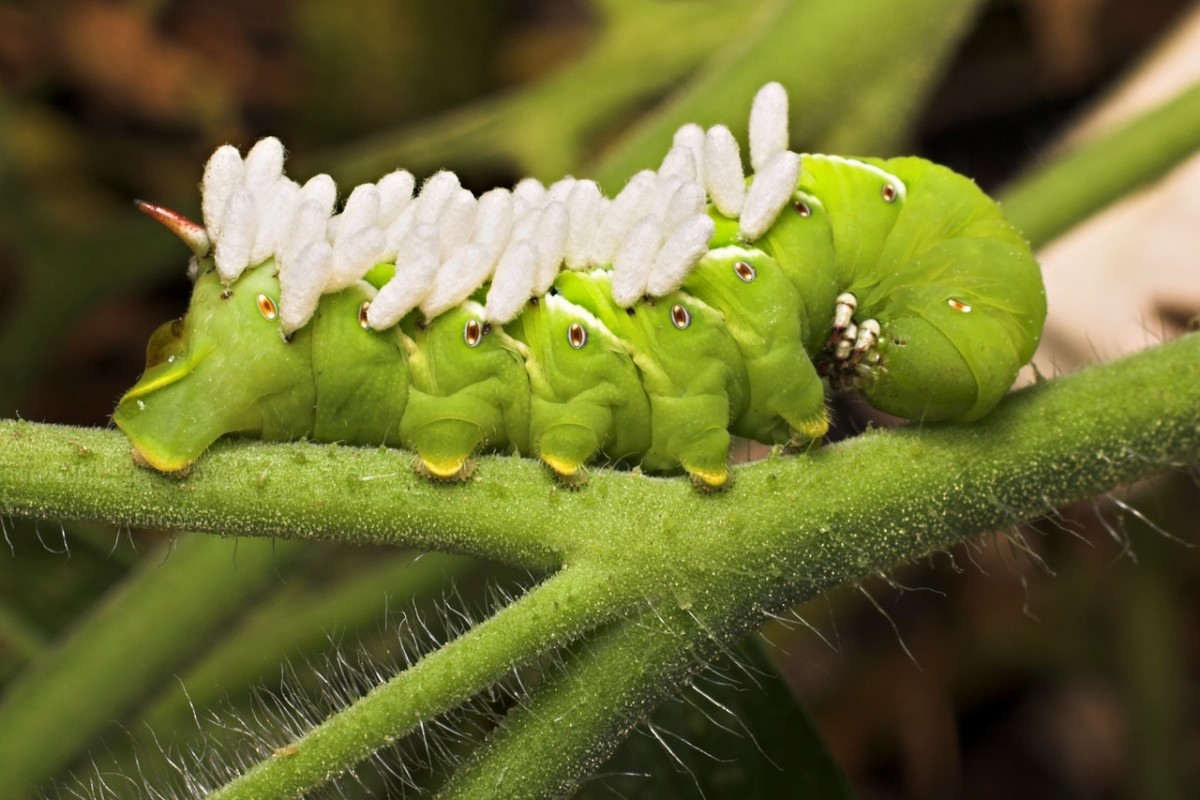Every garden has its secrets, and one of the most fascinating—albeit slightly eerie—creatures to encounter is the tomato hornworm caterpillar. These little critters, although they may seem inconspicuous, can wield quite a punch when it comes to their impact on plants like tomatoes, peppers, and eggplants. If you’ve ever found mysterious holes in your precious plants, it may be time to delve into the cryptic world of the tomato hornworm. With their vibrant coloration and astonishing metamorphosis, these caterpillars are more than just pests; they are a unique part of the ecological tapestry that deserves a closer look.
What Are Tomato Hornworms?
Tomato hornworm caterpillars, scientifically known as Manduca quinquemaculata, are the larval stage of the five-spotted hawk moth. Identifiable by their broad, green bodies and faint white stripes along the sides, they can grow to an impressive four inches in length. Although they may look like small monsters, their appearance is indeed deceiving. These caterpillars are armed with an eerie, horn-like protrusion located at the rear end, which in fact serves more as a deterrent than a weapon. A common misconception is that these “horns” signal danger—they do not sting or bite but create an illusion of fierceness meant to discourage potential predators.
Lifecycle Adventures
The lifecycle of a tomato hornworm is a captivating journey that begins when adult hawk moths emerge from their pupal envelope. These nocturnal pollinators, resembling small birds in flight, are adept at flitting among night-blooming flowers. Upon finding suitable mates, the female moth lays her eggs on the leaves of host plants, often within clusters of green or brown eggs that may be nearly invisible to the naked eye.
Upon hatching, the larvae begin their voracious feast. It’s during this stage of life that they are the most destructive, munching on foliage and sometimes even the fruit itself. The caterpillars can consume an astounding amount of plant matter, making them a formidable foe for even the most seasoned gardener.
Identifying Damage
Recognizing the signs of a hornworm infestation is crucial for effective control. One of the most glaring signs is the large, irregular holes chewed into the leaves. While inspecting your plants, look for frass, which is the scientific term for caterpillar droppings. Tiny, dark green pellets scattered beneath the plants are a telltale indicator of their presence. If left unchecked, a small number of hornworms can quickly decimate a vegetable garden in just a few days.
Natural Predators and Parasites
Within the ecosystem, tomato hornworms are not without their natural enemies. Various birds, such as the red-eyed vireo and the blue jay, relish a meal of these caterpillars. Additionally, parasitic braconid wasps play a critical role in controlling hornworm populations. These wasps lay their eggs within the caterpillar’s body, leading to the emergence of numerous tiny wasps that ultimately spell demise for the host hornworm. Observing the fascinating interconnections of nature can reveal much about pest management in gardening.
Control Measures
For gardeners seeking to curb the destructive habits of tomato hornworms, both organic and chemical options exist. Handpicking is an effective method and, despite being slightly squirm-inducing, provides immediate results. Simply don a pair of gloves and search your tomato plants, gently removing the caterpillars and relocating them to a more suitable area—such as your compost pile—may seem cruel but is an environmentally friendly approach.
If a more comprehensive method of control is required, consider introducing beneficial insect species or using organic pesticides that target hornworms specifically without harm to beneficial insects. Neem oil and diatomaceous earth are popular organic solutions, as they deter pests while minimizing environmental impact.
Fostering Biodiversity
Encouraging a diverse ecosystem within your garden can naturally diminish hornworm populations. Flowers like marigolds, dill, and yarrow attract predatory insects, bolstering the garden’s resilience against harmful species. This biodiversity creates a harmonious space where every creature, no matter how small, has a role to play.
Innovative Appreciation
While these caterpillars can be wreakers of havoc, they also represent an awe-inspiring transformation. Watching a tomato hornworm metamorphose into a stunning hawk moth is a beautiful reminder of nature’s cycles. For the younger audience who may find themselves squeamish, it’s worth noting that understanding the beauty behind these creatures can turn trepidation into appreciation. After all, life is more enjoyable when viewed through a lens of wonder rather than fear.
In conclusion, the tomato hornworm caterpillar, with its striking appearance and undeniable impact on gardens, is a prime example of the intricate balance of nature. By understanding their lifecycle and behaviors, adopting eco-friendly control tactics, and fostering a diverse ecosystem, gardeners can successfully coexist with these remarkable, if sometimes annoying, inhabitants of the garden. So, the next time you encounter one of these green giants, remember you’re not just facing a foe, but a fascinating aspect of nature that might just enchant you—once you get past the caterpillar jitters!









Leave a Comment